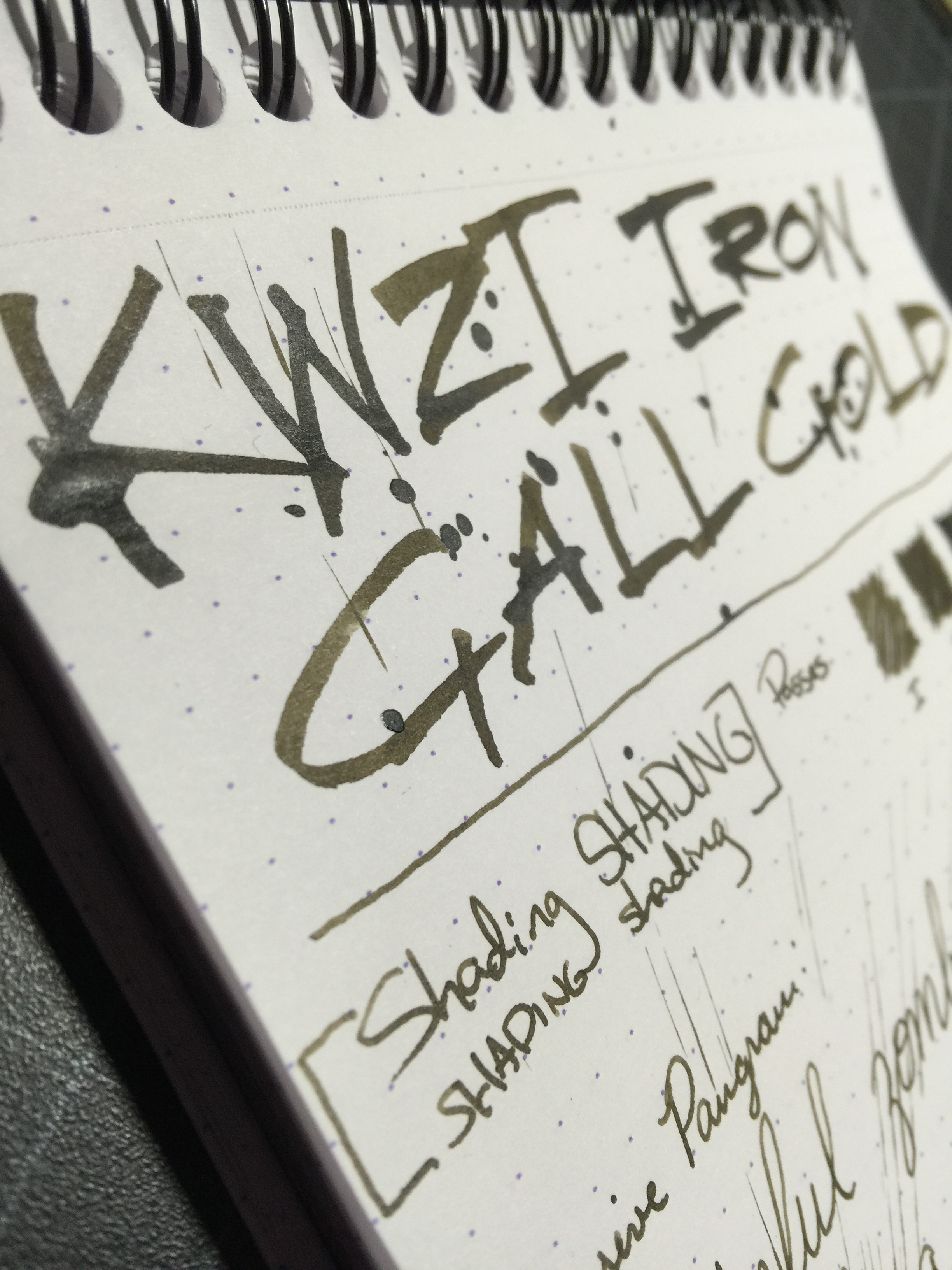Ink Review: Kaweco Sunrise Orange
Kaweco Sunrise Orange
Pen: Kaweco Ice Sport - Black (M)
Paper: Rhodia #16 Blank - 80gsm
Shading: moderate
Saturation: low
Flow: medium wet
Dry Time: ~12 seconds w/Kaweco medium
Many fountain pen companies' line of inks are generally known to be very basic, underwhelming inks. A lot of them are so under-saturated that they almost lean "watery." I've often steered away from some pen manufacturers' inks for that reason, especially having tried some standard cartridges that come with pens that result in a very "meh" writing experience. I wanted inks that represented me and my personality - after all, the fountain pen hobby is all about customizing to fit you style and needs.
Of course I knew that not all pen companies' inks were that way, but still the general mentality stuck. Because of that, I'd really not ventured into the Kaweco inks, as I suspected them to fit this description. When they released their two newest inks, one of them being Sunrise Orange - I was very intrigued. Needless to say, they broke stigma around pen makers' inks with this one.
Sunrise Orange is a fun orange ink that has a very nice balance between saturation and shading. It has the benefits of being a pen manufacturer's ink in that you don't have to worry about extreme properties, but it also provides a much richer color that doesn't suffer from the "watered down" syndrome that some others do. I like the color variance that it provides when used in different nib sizes - in heavier writing pens, its color reminds me of pumpkin pie, while in fine and medium nibs, it's very similar to shades like Noodler's Apache Sunset and Habanero. It doesn't give you quite as much shading and color variation as Apache Sunset, which is one of the best shading inks out there, but it's certainly not bad.
I found the dry time to be one of the best features of this ink - in my medium Kaweco nib, it dried right around 12 seconds on Rhodia, give or take depending on writing pressure. With a finer nib, it should be even less, so I would suggest this ink as one to try out in the spirit of Left Hander's Day today! I didn't find the ink to feather at all on Rhodia, Clairefontaine, Tomoe River, or my Field Notes Byline. It's not weak on the saturation, but also gives a good amount of shading as I mentioned. Although it's not a super wet flowing ink, I didn't find it to write dry - even with a Kaweco nib which sometimes have a tendency to write on the dry side.
Kaweco's bottle design isn't super fancy, but it's not plain either. I really enjoy the feel of the cap as it screws on - it has an inner liner that form fits to the lip of the bottle and prevents any air leak or evaporation, and it gives a nice positive "seal" when you tighten it. The mouth of the bottle can be a bit small for larger pens, which could cause a problem when trying to tilt the pen and bottle with low ink levels. The bottle's design does lend itself to getting the most out of the bottle before having to use an ink syringe to fill from lower ink levels, so with thinner pens you should fair well.
Chromatography was mostly orange, with a slight hint of greyish-blue.
The swab comparisons really show just how similar in shade this ink is to Apache Sunset and Habanero. I think the color most closely matches Habanero, but doesn't give quite as much shading as either one. If you love either of these inks, but don't want quite as much color variation, Sunrise Orange is a great choice. The pumpkin pie coloring the ink exhibits when more ink is laid down is one thing that sets this apart from either of these two, and even some others in the same color range.
I love where Kaweco is taking their ink line, and I'm glad they've helped me step outside my normal brand usage. I plan on trying out a couple of their other standard colors as well, and expect a review in the coming days of their other new ink, Smokey Grey! The new inks don't appear to have made it to most US retailers as of yet, but they're on their way. The ink will be available in both bottled and cartridge form - cartridges for around $3 for for 6, and bottled for between $13 and $16 for 30mL depending on the site.
(Kaweco has provided this product at no charge to The Desk for the purpose of review. My opinions are honest and without bias - visit the About Me page for more details).









